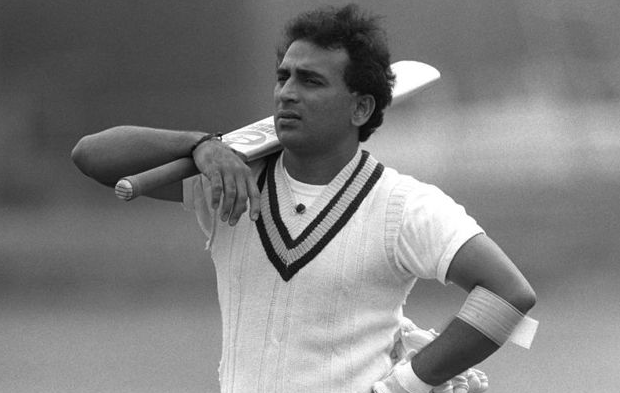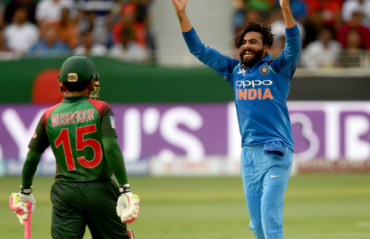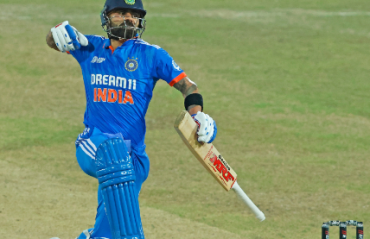Sunil Gavaskar -- the man who endowed Indians with a 'sunny' perspective
- By Vinay Kanchan
- July 13, 2020
Sunil Gavaskar (fondly called ‘Sunny’ much before the Betaab Deol was on the public radar) was perhaps the first Indian cricketer who, according to universal consensus, rose to the adjective of ‘consistently world class’. His 71st birthday was a few days ago, and coincidentally '71 was also the year he made his debut in. These two intersections presented the perfect opportunity to take guard again and re-examine the deeds of this great Indian champion.
Gavaskar inspired many subsequent generations to not only to take up the game, but also made Indians believe being on top of the world was possible for them. For a nation just finding its feet, after centuries of colonial rule, he presented a riveting example of holding one’s head high and taking on the best the world had on offer.
Gavaskar’s importance to the evolving Indian psyche post-independence simply cannot be understated, especially given the place cricket occupied in the collective Indian subconscious. From his sublime and unfailing straight bat, which epitomized an Indian belief and adherence to the rigor of hard work and strongly-held values, to his penchant for grinding through the most difficult situations which motivated his countrymen to plough through a period of low economic ‘run rate’ and opportunity, sometimes simply to battle another day.

Gavaskar stood for a beacon of Indian excellence through the seventies and much of the eighties. For a large part of that period, right from his first record-breaking Test series in the Caribbean, his was the wicket the rival team wanted most. He often stood between the opposition and victory. And he courageously battled some of the most fearsome bowling of all time.
He squared up to the dreaded West Indian pace quartet at the height of their frightening pomp. He took on Thomson and Lillee, Imran and Wasim, Willis, Snow and Botham, Richard Hadlee, and that’s just talking about some of the pace and swing merchants of the time. All these were bowlers, the kind that would never quite be seen in the game again. And Gavaskar quelled them without ever having resorted to wearing a helmet. Then there were the spin wizards, the likes of Lance Gibbs, Derek Underwood, and Abdul Qadir, to name a few. Gavaskar’s technique and temperament had an answer to everything that was thrown his way. This is why his runs should probably always count for much more, because he played the best attacks in the most trying of conditions.
His captaincy often gets lesser attention as compared to his legendary batting exploits.
However, it is important to remember, India started consistently winning at home, primarily during the Gavaskar era. Series wins against the West Indies, Pakistan, Australia, and England should have made captaincy a more permanent state of affairs with the original Little Master. But those were strange times, and for a long while the captaincy flip-flopped between Gavaskar and Kapil Dev, like the ball in a rally across a ping pong table. His last stint at the helm was a truly memorable one. His astute strategic and tactical acumen was in great evidence, when India won the Benson & Hedges World Championship of Cricket in 1985, convincingly beating everyone who came in their way.
Gavaskar was also perhaps the first Indian cricketer to show the others that life could go on, even post unbuckling the pads. His pioneering stints in foreign television commentary boxes, his regular articles and books, his curated and riveting television programs, his forays into sport management, all showed one could still be a part of the game post retirement from the pitch. Gavaskar was truly a trailblazer in every sense of the world.
In the end, beyond the staggering records he leaves behind a huge legacy, like being the first player ever to scale the 10,000 Test runs summit, and the first one to eclipse the indomitable Don’s tally of centuries. I would, however, like to believe there is something equally important that his exploits at the crease teach the young generation of today.
Gavaskar's ability to leave the ball alone for long periods of time should inspire the young of today about not reacting to everything that happens around them. Sometimes leaving things as they are and just staying with the situation is a priceless mindset to adopt.
His trademark starts to innings involved strictly playing along the ground and in the ‘V’ for a while, before indulging in any sort of expansive shots. This mindset should tell the new generation that any kind of ambitious venture has to be first built on a very stable foundation.
His near mythical ability to keep watching the ball, sometimes right into the keeper’s gloves, should tell them about the need to keep a close watch on the behavior of things likely to get them ‘out’ or ‘stumped’.
And his iconic straight drive straight past the bowler should paint a vivid picture of replying to all steep challenges with confidence and panache.
Sunil Gavaskar was more than just a cricketer. He was a phenomenon which nudged our thinking in newer directions. And as we unite in wishing him an even more rewarding innings ahead, there is so much we can learn from him when it comes to excelling on the pitch of life.
--
Vinay Kanchan is the author of ‘Sportivity’, ‘Lessons from the Playground’ & ‘The Madness Starts at 9’. He is the patron saint of Juhu Beach United, a footballing movement which celebrates the ‘unfit, out of breath working person of today’.





























